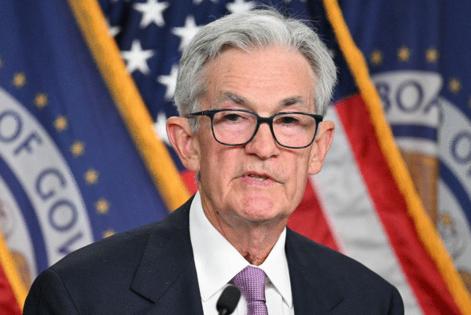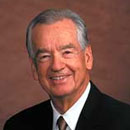The Fed announces big interest rate cut, the first reduction since 2020
Published in Business News
WASHINGTON — The Federal Reserve on Wednesday slashed interest rates by an unusually large one-half of a percentage point and signaled that further cuts are on the way for households struggling with still-elevated prices and a generally slowing economy.
It was the first rate cut since 2020 and reflected a shift in policymakers’ primary focus from fighting inflation to preventing the labor market from deteriorating.
While inflation has come down, job growth has slowed significantly in recent months. And the U.S. unemployment rate has risen from 3.7% at the start of the year to a still historically low level of 4.2%. California’s most recent unemployment figure is a full percent higher.
“This recalibration of our policy stance will help maintain the strength of the economy and the labor market, and will continue to enable further progress on inflation,” Fed Chair Jerome H. Powell said at a news conference after the conclusion of policymakers’ two-day meeting Wednesday.
Stocks had been trading higher in recent days and initially climbed upon news of the Fed’s aggressive rate cut, but then gave up the gains to finish moderately down Wednesday.
Although lower interest rates will ultimately help with many transactions such as credit card charges and buying a house, analysts warn that it may take months for these benefits to seep down to consumers because many of the transactions associated with interest rates take time to occur and filter through the economy.
“There’s not going to be some windfall for consumers. Instead it’s going to take six to 12 months to see really meaningful relief in terms of interest charges and monthly payments,” said Greg McBride, chief financial analyst at Bankrate.com.
The effects may be greater in California than in many other states: California’s economy is highly sensitive to interest rates, especially in its housing and small businesses.
“That should help slightly with our loan payments,” said Teghvir Toor, who runs a family-owned Arby’s franchise in Sacramento. “The real effect of that drop won’t be seen for months, so I’m hoping that will help our customers’ purchasing power, meaning hopefully more discretionary spending.”
Although there was little doubt that the Fed would lower borrowing costs since inflation has clearly moderated, it was a toss-up whether policymakers would go big or small. Many market players and analysts had sought a half-point rate cut rather than the more conventional quarter-point move on Wednesday, arguing that the central bank had kept interest rates too high for too long, constricting businesses and straining consumers, especially younger and moderate-income households whose debts and delinquency rates have risen significantly.
Many analysts, however, expected the Fed to make a cautious pivot, not wanting to risk reigniting inflation or giving the impression that the job market and economy were sliding into trouble and needed an immediate burst of support. Of the 12 voting members of the Fed’s policy-setting committee, there was one dissenter, Michelle Bowman, who preferred a quarter-point cut.
With Wednesday’s action, the Fed’s benchmark interest rate will stand between 4.75% and 5%, still the highest since 2007.
Powell said the Fed was not playing catch-up with its bigger-than-expected rate cut. “We don’t think we’re behind,” he said, repeating several times that the labor market and the overall economy are in good shape.
“And our intention, with our policy move today, is to keep it there,” he said.
Fed officials, in their economic projections released Wednesday, generally expect the U.S. economy to grow at a solid 2% pace this year and through 2027. They expect unemployment to rise slightly to 4.4% by December and inflation to end the year at 2.3%.
The Fed’s benchmark overnight lending rate influences a variety of business and consumer loans. In recent weeks, market expectations of Fed cuts had already pushed down home loan rates. The 30-year fixed-rate mortgage averaged 6.2% last week, down from 6.73% in early August and 7.18% a year ago, according to Freddie Mac.
Other borrowing rates, including averages for credit cards, auto loans and home equity lines of credit, all of which are at more-than-two-decade highs, have changed little recently and are likely to move down only gradually.
Based on Fed officials’ latest projections, they are likely to lower rates by a quarter of a point two more times this year and four times next year. Powell cautioned, however, that interest rate policy is not on a pre-set course and that future moves will depend on incoming economic data.
In early 2020, before COVID-19 and a pandemic-related outburst of inflation caused big interest rate swings, the Fed’s key rate was between 1.5% and 1.75%. Most experts don’t see the Fed rate dropping that low again in the foreseeable future, but possibly settling around 3%.
“Definitely, this is a good start,” said Moussa Diop, a real estate finance and market expert at USC, referring to the Fed announcement Wednesday.
Given that home borrowing rates have already priced in some Fed cuts — with little effect on the housing market so far — Diop said 30-year fixed mortgages may need to fall below the 6% “psychological threshold” before it spurs greater activity among sellers and buyers.
Diop said he worries that lower mortgage rates will boost home-buying demand and in turn drive up already high home prices in the short term — essentially negating the benefit people could derive from lower interest rates.
G.U. Krueger, an independent housing economist in Los Angeles, said the magic number may be closer to 5%: “That would free up those owners who are itching to move and release more listings,” he said.
About 60% of homeowners are currently sitting on mortgages with rates under 4%, Diop said.
The Fed news Wednesday may “give us a small flurry of activity,” said Michele Birke, a longtime real estate agent in Beverly Hills. But “we desperately need a price correction in the market,” she said, adding that uncertainties over the November election and the new rules on broker commissions are also giving people pause.
Businesses say Fed rate cuts are overdue. Small businesses are more dependent on bank financing, and in the last two years have faced a double whammy of high inflation and high borrowing costs.
The Fed began raising interest rates in March 2022, starting with a quarter-point increase. It jacked up rates another 10 times through July 2023, mostly in increments of a half-point or three-quarters of a point, in an effort to fight a surge in inflation. Consumer price inflation peaked at 9.1% in June 2022 but has since come down to 2.5%, and most analysts see it gradually moving to the Fed’s 2% target.
The Fed was slow to raise rates when inflation jumped in the second half of 2021, thinking it was more a blip. And there’s been concern that policymakers are once again behind the curve, this time in lowering rates even as the labor market has cooled. Job growth from June to August has slowed to 116,000 a month on average, from more than 200,000 in the previous three months and over the last year.
Consumer spending, which drives the American economy, has held up well, but more people, especially in lower-income households, are now borrowing to support their spending. Average interest rates on credit cards have been running at more than 21% this year, according to Fed data.
Fed rate cuts will help, but prices for goods and services may remain uncomfortably high for many households.
“The feeling that people have in supermarkets is still very real. It still hurts,” said Beth Ann Bovino, chief economist for U.S. Bank. “That, combined with higher borrower costs, people don’t feel great. It’ll take some time before people get back in control of their finances.”
©2024 Los Angeles Times. Visit at latimes.com. Distributed by Tribune Content Agency, LLC.












Comments